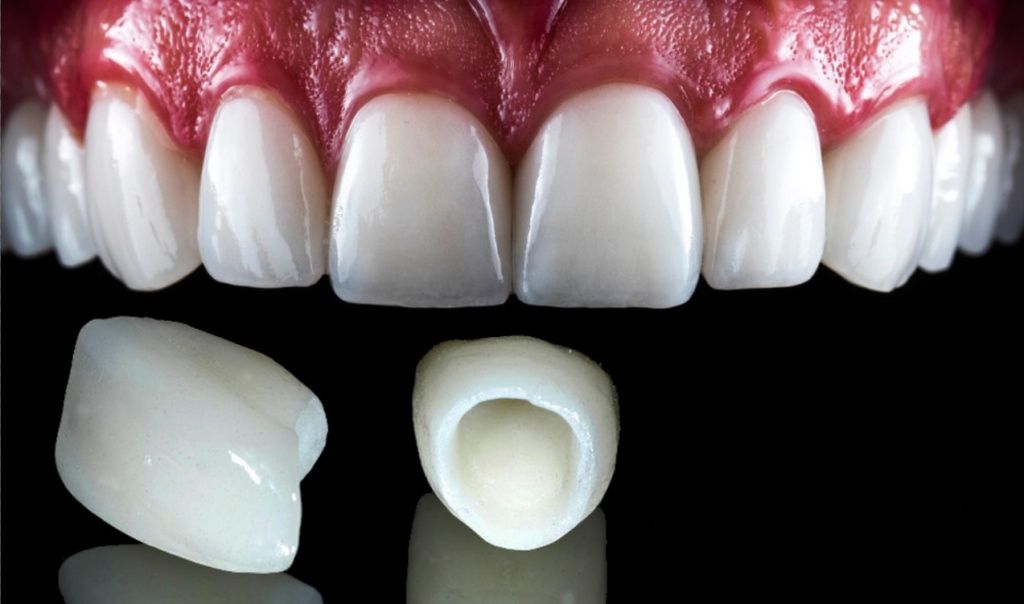Zirconium Crowns
Zirconium Crowns
Crowns are recommended to cover teeth that are damaged, broken or worn down. In some cases where your existing teeth are abnormally shaped or you are unhappy with the general appearance of them they can be recommended for a smile makeover.
Used For
Teeth which are broken or misshaped. Crowns can be sculptured to match your existing teeth and close gaps to create a new smile makeover.
Timescale: 4-7 Days

What Are Dental Crowns?
A dental crown completely covers the entire tooth, which means more of the tooth will need to be filed down before a crown can be placed. Crowns are typically used to restore teeth that have been badly damaged by decay, cracks, or fractures. If tooth decay is the reason you need a dental crown, your dentist will need to remove the decayed part and possibly rebuild some of the tooth so that it can support the crown. Dental crowns are usually molded from either porcelain, porcelain fused to a metal alloy (PFM), or an all-metal alloy. Your dentist will fabricate the crown to securely fit over your tooth and then cement it into place.
Veneers vs Crowns: How Are They Similar?
Both veneers and crowns are dental treatments that improve the appearance and function of teeth. They are typically used to restore teeth that are somehow damaged, whether discolored, crooked, decayed, chipped, cracked, or broken. Veneers and crowns are both made to match the color of the rest of your teeth—with the exception of all-metal crowns—to give you a seamless, complete smile. Once they are applied, it’s difficult to tell the difference between a veneer and crown because they will each have a similar effect on your smile. You will care for both veneers and crowns virtually the same way. You’ll need to brush them twice a day just like the rest of your teeth and floss to remove food particles. Regular dentist visits will also be needed for professional cleaning and to check the restorations.
Veneers vs Crowns: How Are They Different?
The biggest difference between veneers and crowns is how they fit your tooth and the reason behind needing them. A porcelain veneer is bonded to just the front surface of your tooth, while a dental crown covers your entire tooth. This tends to make veneers more aesthetically pleasing than crowns because they show less gum margin. Crowns are thicker than veneers—two millimeters compared to one millimeter—and are more permanent. Veneers may need to be replaced after a certain number of years, but crowns may be able to last most of your life.
What are the procedures for a dental crown?
Here’s what to expect from a dental crown and a dental onlay procedure.
Procedure for a dental crown
- Schedule an initial visit to prepare your tooth for the crown. The dentist will take X-rays and you’ll receive local anesthesia to numb the area.
- The dentist removes tooth decay or any damaged areas of the tooth. You might need a root canal to remove bacteria from inside the tooth.
- The dentist shaves down the tooth to make room for the crown. Using a putty-like material, they’ll create an impression of the tooth.
- The dentist sends the impression to a laboratory to customize a permanent crown to fit over the damaged tooth.
- At the end of your first appointment, the dentist covers the tooth with a temporary crown. You’ll need to wait about 1 to 2 weeks to receive the permanent crown. Some dental offices can make a crown or an onlay that’s ready on the same day.
- On your second visit, the dentist removes the temporary crown to prepare the tooth for the permanent crown.
- The dentist places the permanent crown over your tooth to check the fit. They may make further adjustments to the tooth’s surface or the crown if the fit isn’t exact.
- If the crown fits properly, the dentist applies a numbing agent to the area around the tooth.
- The dentist cements the permanent crown over your tooth.
How long does a crown last?
Dental crowns and onlays are durable and designed to last typically 5 to 15 years.
But particular factors could shorten their duration, including:
- grinding your teeth
- biting your nails
- chewing hard or sticky objects
- injury to the tooth or surrounding area
These can cause the material to break, crack, or chip and require early repair or replacement.
Dental crowns are tooth-shaped caps or a tooth cap that is placed atop damaged teeth. They restore the tooth’s shape, size, strength, and appearance. A tooth crown can be made out of metals, porcelain, ceramics, and resin. Usually, they do not require special care other than regular good oral hygiene.
Reasons for needing a dental crown
The different reasons for needing a dental crown include:
- Protecting a weak tooth from breaking or keeping the weak tooth together if parts of it are cracked
- Restoring a broken tooth or a severely worn down tooth
- Covering and supporting a tooth with a large filling and an insubstantial segment of the tooth remaining
- Holding a dental bridge in place
- Covering misshapen or severely discolored teeth
- Covering dental implants
- Covering a tooth that has been treated with a root canal